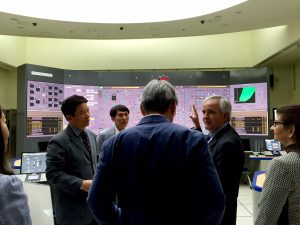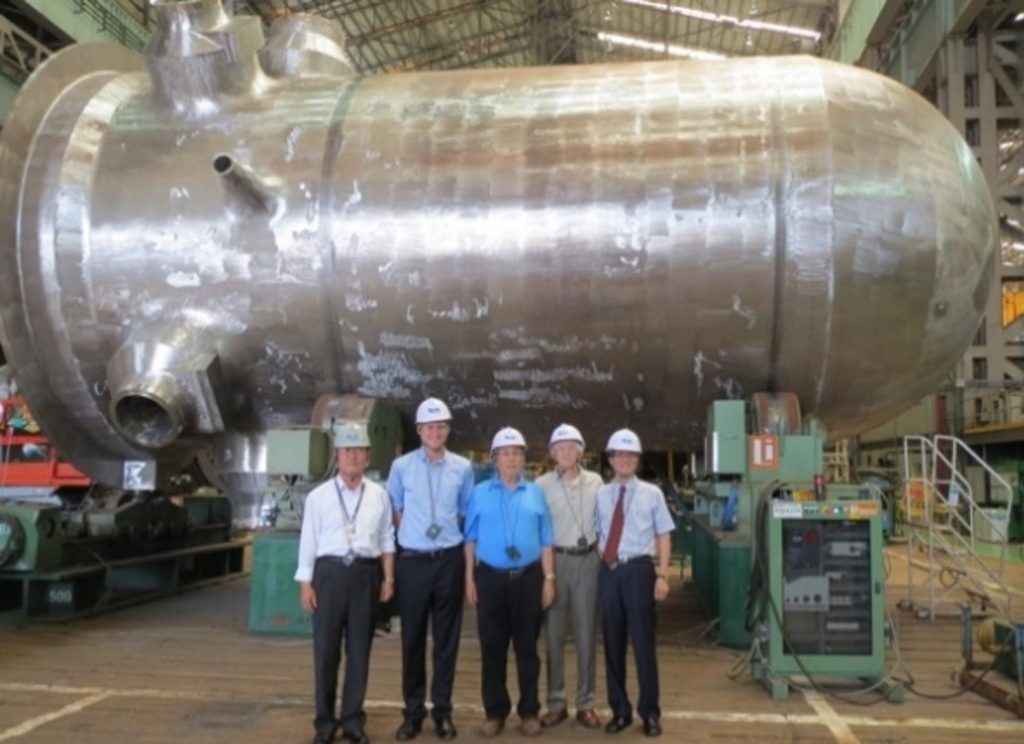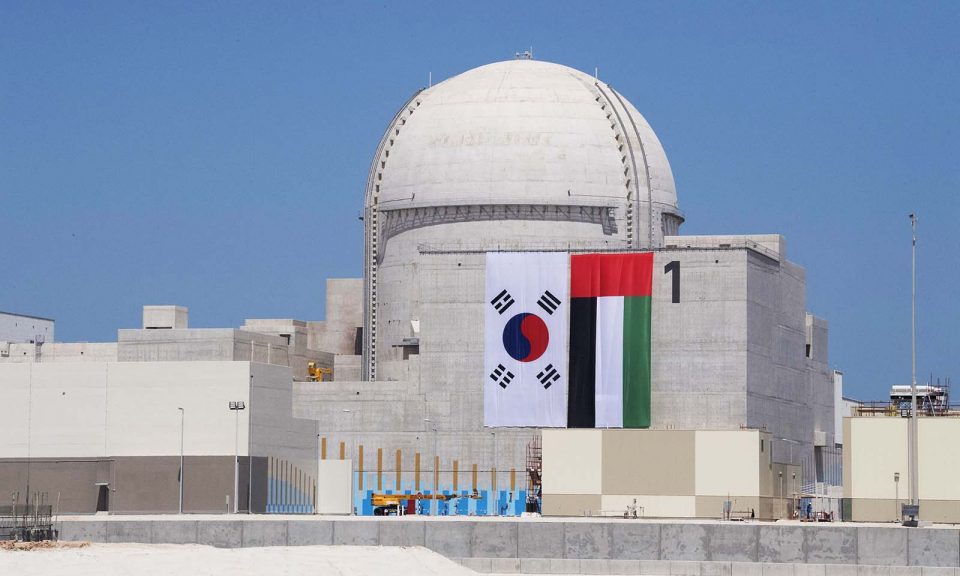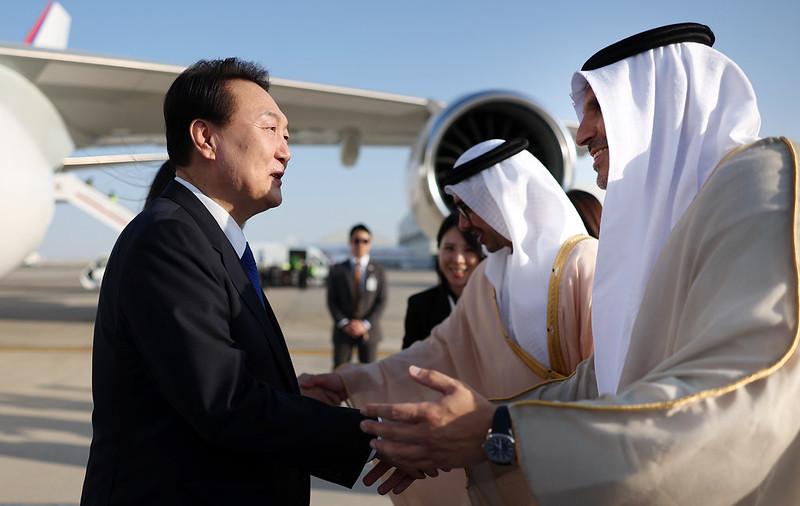The Disastrous Downsides of South Korea Building Nuclear Weapons
Is South Korea Willing to Lose Its World-leading Nuclear Power Program to Build the Bomb?

In a wide-ranging interview on January 11, South Korean President Yoon Suk-yeol warned Pyongyang that if North Korea’s nuclear threat continues to advance, South Korea would consider building nuclear weapons of its own or ask the United States to redeploy them on the Korean Peninsula. Although President Yoon walked back these comments at the World Economic Forum in Davos, they were published in the South Korean press and reinforced by some Republic of Korea (ROK) defense analysts. Cheon Seong-whun said, “President Yoon’s comment could turn out to be a watershed moment in the history of South Korea’s national security.”
A South Korean decision to build its own bomb could, indeed, be a watershed. Threatening Pyongyang does little besides give it a stronger justification to enhance its own nuclear arsenal. I believe that such a move would trigger a tsunami that would wipe out Seoul’s remarkable economic miracle and destroy the soft power it has established around the world.
President Yoon’s frustration of having to stand by as the North revved up all aspects of its nuclear and missile programs over the past year is understandable. But his latest threat, alongside the Biden administration’s tepid North Korea policy, demonstrates how both have little understanding of the 30-year history of how and why Pyongyang built a threatening nuclear arsenal.
In the book Hinge Points: An Inside Look at North Korea’s Nuclear Program, published last week, I describe how at key moments in the past, so-called hinge points—bad decisions by both sides—have landed us in the present quandary. President Yoon may well be moving to another hinge point, this one with disastrous consequences: a more dangerous Korean Peninsula and a greatly weakened South Korea.
The National Burden of a Nuclear Arsenal
Whereas President Yoon’s comment, “…we can have our own nuclear weapons pretty quickly, given our scientific and technological capabilities” is true, it doesn’t come close to capturing the national redirection, expense, and immense burden that Seoul would have to shoulder to field not just one bomb, but a nuclear arsenal to counter Pyongyang’s.
It is true that with its advanced technological capabilities, South Korea could probably build the bomb quickly. But a few bombs don’t make a nuclear deterrent, particularly if Seoul will have to go it alone. And let’s be clear, if Seoul were to go down this path, Washington could, and likely would, withdraw its nuclear umbrella. Building a nuclear arsenal to counter Pyongyang’s would require a major national redirection of its economy and diplomacy that would negatively affect nearly all facets of South Korean life for decades.
For nearly fifty years, South Korea has pursued a civilian nuclear energy program. It wisely focused on the middle of the fuel cycle—that is, reactor fuel fabrication, reactor construction and operation, and electricity production. It has built neither enrichment nor reprocessing facilities. Consequently, South Korea has no inventory of bomb-grade plutonium or uranium currently stockpiled. To build nuclear weapons, it would have to repurpose some of its civilian reactors to produce the plutonium bomb fuel (combined with using its laboratory-scale pyroprocessing facilities to extract plutonium) or construct a centrifuge facility to make highly enriched uranium. Either path would take at least two years to produce enough bomb fuel for even a few bombs. In the longer term, an effective nuclear deterrent would require new, dedicated nuclear weapons facilities, requiring substantial time and financial commitments.
The next step in building a bomb is weaponization—that is, designing, building and testing the nuclear devices. South Korea could surely master all scientific and engineering challenges of building a bomb—as it has demonstrated so convincingly in mastering civilian nuclear power generation. Some of the purely military aspects could be accomplished in concert with its conventional military technical complex. But to prove the design and fabrication, there would need to be nuclear testing, but where? Neighboring countries—China and Japan—would certainly object strongly, and there would undoubtedly be strong domestic opposition to tests from every South Korean province.
The nuclear warheads will also have to be integrated into delivery vehicles—such as ballistic missiles, cruise missiles, submarine-launched missiles or bombers. South Korea has all the basic building blocks, but it would still have substantial work to do to integrate the nuclear warheads into the delivery systems. Moreover, these requirements will continue to evolve as North Korea upgrades its offensive and defensive capabilities. The assembly, disassembly and fielding of nuclear devices pose serious safety and security risks and would have to be learned without help or advice from current nuclear powers. Seoul will also have to develop a command-and-control structure that is more stringent than anything it has done so far for its conventional military.
Another consequence of building a nuclear arsenal is that it will compete for resources—financial, personnel, and technical—with the South’s conventional military. As with other industries, such as electronics, automotive and consumer goods that depend on South Korean engineering and manufacturing, its military industry has risen to be among the best in the world. South Korea has become one of the top international suppliers of military hardware. Seoul’s sales pitch is that it can deliver NATO-attuned military hardware faster and at lower prices than the United States. Changing directions to focus on a nuclear arsenal will derail most of its conventional military export business.
Should South Korea decide to build its own nuclear arsenal, I believe the United States will almost surely end its military alliance and economic partnership with Seoul. Congressional sanctions would likely follow, trade would suffer, and technology cooperation would be derailed.
A South Korean Nuclear Arsenal Would Seriously Undermine and Possibly Destroy Its Civilian Nuclear Industry and Global Exports
President Yoon has vowed to reinvigorate South Korea’s civilian nuclear industry and greatly expand its exports. Shortly after his interview, he was in the United Arab Emirates to do just that.
In the 1980s, South Korea worked closely with the United States and Canada and quickly learned how to design, license, build, and operate nuclear reactors. By the 2000s, the Korea Electric Power Corporation (KEPCO) licensed and built its own Advanced Power Reactor, the APR-1400. I visited South Korea’s impressive nuclear facilities about ten years ago. I found the Korea Atomic Energy Research Institute (KAERI) in Daejeon to be a world-class research laboratory. Its High-Flux Advanced Neutron Application Reactor (HANARO) is one of the best in the world, which allows the South to do cutting-edge nuclear research and produce a variety of nuclear isotopes.
The fuel fabrication facility in Daejeon, operated by KEPCO Nuclear Fuels, is a marvel of modern engineering and manufacturing. Doosan Heavy Industries in Busan is one of the few places that can forge reactor vessels for modern light water reactors. It was there that our Korean host showed us one (pictured below) that was going to the Vogtle reactor being built by Westinghouse in Georgia. The United States no longer has the capacity for heavy forgings like reactor vessels. South Korea, along with Japan, are among the few in the world that still do. At the time, I concluded that South Korea was a model for the nuclear industry.

In 2009, South Korea won the contract to build four of its APR-1400 reactors for the United Arab Emirates. It has done a remarkable job and is well on its way to putting the four reactors on the grid. South Korea’s success is in stark contrast to the huge cost overruns experienced by the French company Areva in Finland and Westinghouse in the United States. The two reactors to be built in South Carolina were scrapped after an expenditure of $9 billion. The two in Georgia are in better shape, but still greatly over budget. KEPCO, on the other hand, has proven itself competent and the supplier of choice to the western world. Poland recently signed a contract for a reactor from KEPCO.


If Seoul decides to build the bomb, it will likely bring about an end to its nuclear export business, both for lack of customers and because the US can block the export of many South Korean nuclear technologies since they are based on US technologies licensed to the South. It may also lead to the shutdown of its domestic reactor fleet. South Korea imports all the uranium used for its civilian nuclear reactors and depends on other countries for enrichment services. Once South Korea withdraws from the Nuclear Nonproliferation Treaty (NPT), it may no longer be able to produce nuclear fuel, threatening the domestic nuclear industry, which generates one-third of South Korea’s electricity.
Seoul Would Deal a Serious Blow to the Nonproliferation Regime
South Korea would be the first democratic country to withdraw from the NPT, dealing a blow to decades of US leadership in preventing nuclear proliferation. As serious as the North Korean nuclear threat is, I believe Washington would have no choice but to condemn and counter the South’s decision to build the bomb. The nonproliferation regime is a complex fabric of treaties, agreements, assurances, practices, and international organizations. North Korea’s bomb and Iran’s pursuit of the bomb have already stressed the regime. The negative impacts of Russia’s invasion of Ukraine are playing out now. South Korea should not join these countries in undermining the regime.
Its withdrawal or expulsion from the International Atomic Energy Agency (IAEA) would also put it in company with the only other country in that situation—namely North Korea. Instead of playing a supportive role in organizations like the IAEA, the Nuclear Suppliers Group and the Missile Technology Control Regime, South Korea would be shunned by the international community.
South Korea’s withdrawal from the NPT would also undermine one of the most effective elements of the regime, namely forging security alliances to extend security protection to allied states, eliminating the need for these countries to build their own nuclear deterrents. So far, the United States has done this successfully in Europe and in Northeast Asia.
Shooting Itself in the Foot
South Korea’s decision to build the bomb will be widely condemned. It is unrealistic to think that Washington would support such a move or turn a blind eye. Moreover, China would likely level its own sanctions or support the international community to do the same. Consequently, the quest for the bomb will threaten much of South Korea’s economic success and soft power it has so painstakingly constructed over the years. Its quest for the bomb will shatter South Korea’s phenomenal success with the likes of Samsung, Hyundai, and Hallyu.
The irony is that an indigenous nuclear arsenal will make South Korea less secure. It is likely to draw an escalatory response from the North, and Seoul may then have to face that threat on its own. Gone will be the experienced hand of Washington, the nuclear umbrella, and visits by US strategic platforms to South Korean ports and airfields. Instead, a South Korean nuclear arsenal would create the potential for any small incident on the peninsula to go nuclear, with little experience in either Korean capital on how to deescalate such crises. Except for a few instances, over the past forty years, the South Korean public and general life have been rather little affected by various developments in the North. That will change as Seoul will have to decide on its own how to respond to Pyongyang’s threatening actions.
President Yoon may have walked back his comments on pursuing the bomb, but to the South Korean public, it is not a fringe idea. Public opinion polls over the last decade show consistent majority support for nuclear possession. South Koreans also increasingly question the credibility of US extended deterrence. It is imperative for the South Korean government to widen the discourse with the public about what it with cost them to build a nuclear arsenal. Likewise, Washington must better understand why its extended deterrence is being questioned and how it can work with Seoul to correct it.
I have stressed that for South Korea, the decision to go nuclear comes with trade-offs and consequences too enormous to bear. The South can have its own nuclear arsenal—at great expense and sacrifice—or work with the Americans to remain under the nuclear umbrella with American troops stationed on the peninsula. It cannot have both.
